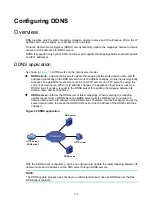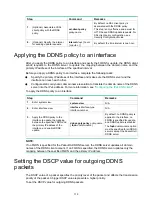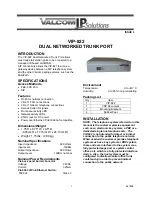
115
[DeviceB] ping host.com
Ping6(56 data bytes) 2000::1 --> 3000::1, press CTRL_C to break
56 bytes from 3000::1, icmp_seq=0 hlim=128 time=1.000 ms
56 bytes from 3000::1, icmp_seq=1 hlim=128 time=0.000 ms
56 bytes from 3000::1, icmp_seq=2 hlim=128 time=1.000 ms
56 bytes from 3000::1, icmp_seq=3 hlim=128 time=1.000 ms
56 bytes from 3000::1, icmp_seq=4 hlim=128 time=0.000 ms
--- Ping6 statistics for host.com ---
5 packet(s) transmitted, 5 packet(s) received, 0.0% packet loss
round-trip min/avg/max/std-dev = 0.000/0.600/1.000/0.490 ms
The output shows that the communication between Device B and the host is normal and that the
translated destination IP address is 3000::1.
Troubleshooting IPv4 DNS configuration
Symptom
After enabling dynamic domain name resolution, the user cannot get the correct IP address.
Solution
1.
Use the
display dns host
ip
command to verify that the specified domain name is in the cache.
2.
If the specified domain name does not exist, check that the DNS client can communicate with
the DNS server.
3.
If the specified domain name is in the cache, but the IP address is incorrect, check that the DNS
client has the correct IP address of the DNS server.
4.
Verify that the mapping between the domain name and IP address is correct on the DNS server.
Troubleshooting IPv6 DNS configuration
Symptom
After enabling dynamic domain name resolution, the user cannot get the correct IPv6 address.
Solution
1.
Use the
display dns host ipv6
command to verify that the specified domain name is in the
cache.
2.
If the specified domain name does not exist, check that dynamic domain name resolution is
enabled, and that the DNS client can communicate with the DNS server.
3.
If the specified domain name is in the cache, but the IPv6 address is incorrect, check that the
DNS client has the correct IPv6 address of the DNS server.
4.
Verify that the mapping between the domain name and IPv6 address is correct on the DNS
server.
















































